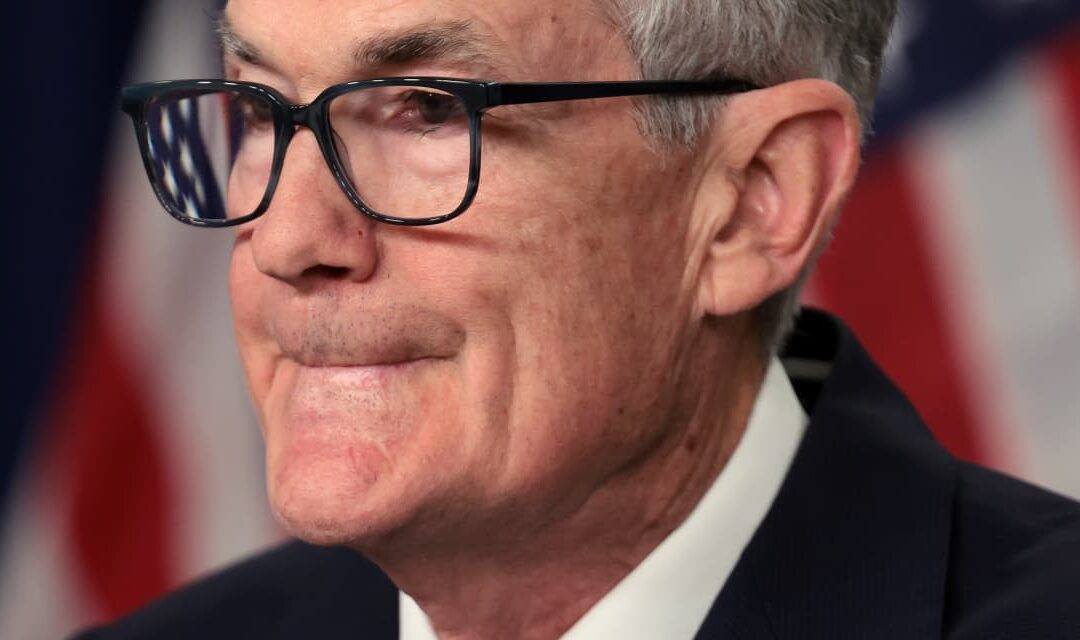Something unusual happened in financial markets Wednesday after Federal Reserve Chair Jerome Powell pushed back on a March interest-rate cut: Investors appear to be bracing for a “policy mistake” by the central bank.
U.S. stocks sold off on Wednesday, with equity indexes hitting their lowest levels of the session after Powell said the central bank was unlikely to cut interest rates in March. The S&P 500
SPX
ultimately logged its worst day since September.
At the same time, Treasury yields fell as bonds rallied, and fed-funds-futures markets priced in as many as six cuts later in the year, with the first cut expected to arrive in May, according to the CME Group’s FedWatch tool.
Seeing stocks sell off while bonds rallied raised eyebrows across Wall Street. This type of pattern was for many years considered a classic “risk off” trade, but since the Fed began hiking interest rates in March 2022, stocks and bonds have traded in lockstep, with stocks falling while yields rose, and vice versa.
According to market strategists, the market reaction sent a clear message that investors were concerned that the Fed won’t start cutting interest rates quickly enough to prevent an economic downturn in the U.S., undermining the hopes for a “soft landing” that had helped boost U.S. stocks over the past few months.
“Markets are starting to discount a Fed policy mistake,” said Nicholas Colas, co-founder of DataTrek Research, in a morning note to clients viewed by MarketWatch.
Charlie McElligott, a derivatives market strategist at Nomura, also described Powell’s decision to play down the chance of a March cut as a “mistake,” adding that markets likely wouldn’t respond well if inflation continues to wane between now and the Fed’s March meeting.
Previously, the Fed had been widely accused of erring by hesitating to hike interest rates until March 2022, based on the view that the worst wave of inflation in 40 years would be “transitory.”
This time around, a policy mistake would involve the central bank leaving interest rates too high for too long.
As Mohamed El-Erian, chief economic adviser at Allianz, said in a post on X, the social-media platform formerly known as Twitter, Powell’s decision to push back against a March cut “is fueling more questions about the risks of the Fed being late again, albeit in a different direction.”
As inflation cools, the real rate of interest, which is determined by taking the nominal rate of interest set by the Fed and subtracting the prevailing rate of inflation, rises. Many economists believe it is this real rate of interest that has the biggest impact on the economy, because the longer that interest rates remain above the economy’s neutral rate of interest, the greater the threat to economic growth.
One complicating factor here is that neither the Fed nor most economists can say for certain where the neutral rate of interest, known in economics parlance as “r*”, actually lies. Powell said during Wednesday’s press conference that the Fed doesn’t know what the neutral rate of interest is.
Regardless, some strategists pushed back on the notion that the market is bracing for a Fed policy error. In a note to clients seen by MarketWatch on Thursday, Jeffrey deGraaf, a technical strategist at Renaissance Macro Research, said corporate credit spreads barely budged yesterday, which contradicts the notion that investors are bracing for a recession.
“A contraction in nominal and real yields is welcomed as long as it’s not accompanied by deteriorating corporate credit conditions,” deGraaf said.
U.S. stocks were bouncing back early Thursday after the S&P 500 recorded its worst two-day stretch since October, with the S&P 500, Dow Jones Industrial Average
DJIA
and Nasdaq Composite
COMP
all trading higher on the day. Meanwhile, the yield on the 10-year note
BX:TMUBMUSD10Y
continued to fall. It was down 7 basis points at 3.89% in recent trading.









